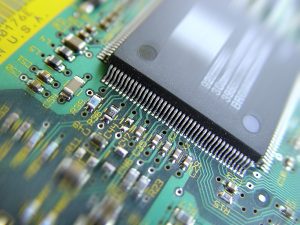Box Build vs. PCB Assembly: Key Differences and Considerations
In electronics manufacturing, two crucial processes often come into play: box build assembly and printed circuit board (PCB) assembly. Both are integral to creating electronic devices but serve distinct purposes involving different methodologies. Understanding the differences between box build and PCB assembly is essential for manufacturers and engineers o make informed decisions about the production of electronic systems.
Box Build Assembly Overview
A box build assembly is a comprehensive process that goes beyond the boundaries of traditional PCB assembly. Simply, it refers to assembling an entire electronic system within an enclosure or casing. This includes the PCB and other components such as cables, connectors, switches, and mechanical parts. Box build assembly aims to create a fully functional and integrated electronic product.
One of the primary advantages of box-build assembly is its holistic approach. Instead of dealing solely with the PCB and its components, manufacturers handle the entire system, ensuring all elements work seamlessly together—this is especially beneficial for complex electronic devices requiring various components to interact flawlessly for optimal performance.
Critical Components of Box Build Assembly
Below are the critical components of box build assembly that play a crucial role in shaping the assembly process, ensuring electronic systems’ smooth integration and optimal functioning.

PCB Integration
While PCBs are vital to box build assembly, they are not the sole focus. Integrating the PCB into the overall system is crucial, and this process may involve connecting the PCB to other elements, such as sensors, displays, or power sources.
Mechanical Integration
Box build assembly incorporates mechanical components, such as casings, enclosures, and structural elements. Ensuring that these mechanical parts align perfectly with the electronic components is essential for the overall functionality and durability of the device.
Cable and Wiring Assembly
Connecting various elements within the electronic system requires careful attention to cable and wiring assembly. This involves routing and organizing cables to prevent interference and optimize the device’s performance.
PCB Assembly Overview
On the other hand, PCB assembly focuses on creating the printed circuit board, the foundation for electronic devices. PCB assembly involves attaching electronic components, such as resistors, capacitors, and integrated circuits, to the bare PCB. This process can be divided into surface mount technology (SMT) and through-hole technology (THT), each with advantages and challenges.
Key Components of PCB Assembly
Below are the key components that are the backbone of electronic circuit manufacturing, contributing to electronic devices’ seamless integration and functionality.
SMT Assembly
SMT assembly involves placing electronic components directly onto the surface of the PCB. This method is known for its precision, high component density, and suitability for small form factor devices. SMT is widely used in modern electronics due to its efficiency and cost-effectiveness.
THT Assembly
THT, in contrast, involves inserting component leads through holes in the PCB and then soldering them to the opposite side. While THT is considered a more traditional method, it is still used for components that are not suitable for SMT or in applications where robustness is a priority.
Component Soldering
A critical step in PCB assembly is the soldering of components onto the PCB. Component soldering demands precision and accuracy to ensure the reliability and durability of the electronic device.
Considerations and Challenges
Deciphering the complex decision-making process between box builds and PCB assembly involves weighing various considerations and addressing specific challenges.
Complexity and Scale
The choice between box build assembly and PCB assembly often depends on the complexity and scale of the electronic system. For smaller and less complex devices, PCB assembly may be sufficient. However, larger and more intricate systems may necessitate the comprehensive approach of box-build assembly.
Time and Cost
PCB assembly is generally faster and more cost-effective compared to box-build assembly. PCB assembly is often the preferred choice for mass production of standardized electronic components. Box build assembly may be more time-consuming and costly due to the additional steps involved.
Customization and Flexibility
Box build assembly offers greater flexibility and customization options, making it suitable for prototypes and unique designs. PCB assembly, while efficient, may be less flexible in accommodating diverse requirements.
Conclusion:
In conclusion, box build and PCB assembly play pivotal roles in manufacturing electronic devices. However, understanding their differences is crucial for making informed decisions in the production process. While PCB assembly focuses on creating the circuit board itself, box-build assembly takes a holistic approach by integrating the PCB with other components to form a complete electronic system. The choice between these processes depends on factors such as the complexity of the device, production scale, time constraints, and customization requirements. Manufacturers and engineers must carefully evaluate these considerations to determine the best approach for their specific applications, ensuring the successful development of reliable and efficient electronic products.
Ready to Elevate Your Electronic Manufacturing Game?
Get ready to go on a journey of electronic innovation with Levison Enterprises, where precision meets excellence. As you’ve explored the challenges of box build assembly and PCB assembly, now is the time to partner with a manufacturing expert who understands the intricacies of both processes.
At Levison Enterprises, we take pride in providing a wide range of services, from PCB assembly to a comprehensive approach to box-build assembly. We bring decades of expertise, a commitment to quality, and a passion for innovation to every project. Whether you’re navigating the terrain of PCBs for compact devices or envisioning a fully integrated electronic system, we are your reliable partner.
Make the smart choice for your electronic manufacturing needs – choose Levison Enterprises. Our state-of-the-art facilities, skilled workforce, and unwavering dedication to excellence set us apart. If you’re ready to turn your concepts into reality, contact us today.
Your vision and our expertise are the perfect match for a future of innovation—Levison Enterprises, where precision meets potential.